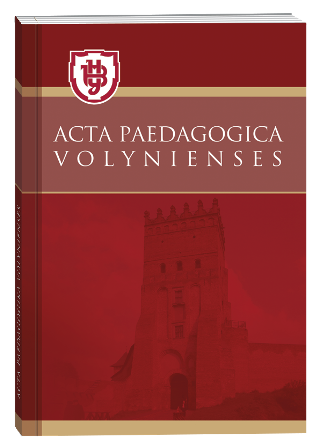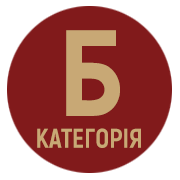TECHNOLOGY OF ASSOCIATIVE TEACHING ENGLISH TO STUDENTS OF PRIMARY EDUCATION
DOI:
https://doi.org/10.32782/apv/2023.6.5Keywords:
ASM, imitation, associative images, associative image-symbols, memorization, an imaginary object, creative activity, students of primary educationAbstract
The goal. The article examines the technologies of teaching English to primary education students by the associative symbol method (ASM), which is the procedural foundation of associative learning of primary school children. Methods: analysis, systematization, generalization. Results. The associative symbol method highlights the language of movements, gestures, facial expressions, the language of our body, language of coded ideas and associations. This method improves the perception and reproduction of information, being built on the child’s ability to imagine and fantasize. It allows to create an image of practically any lexical or grammatical unit by means of bright children’s imagination. The child learns foreign word much quicker if it is associated with a particular image or action. The method incorporates associative symbols into studying a foreign language through imitation. The method of associative symbols is play-oriented. Therein lies its main advantage over the traditional methods of teaching. This method of teaching allows to develop in children concentration skills, independent thinking, attention and discipline. The elements of game-playing make learning interesting, create a cheerful mood at the lesson, facilitate overcoming difficulties in learning. ASM makes it possible to turn a complicated topical material into simple, makes dull learning process interesting and exciting. Children move and speak at the same time. They understand everything, because language and movements intertwine. The novelty of this method is that lexical material in them is presented not traditionally, but using the method of associative symbols which releases pupils from the constant boring memorization of new words and expressions and converts complex learning process into memorizing linguistic material for pleasure. The methodology was developed using the gameplaying techniques, communicative-active, socio-cultural and personality-oriented approaches to the intellectual development of primary school children. Conclusion. It is proved that the use of ASM in learning English allows younger students to perceive language material in an interesting, easily accessible, entertaining way, which ensures effective formation of their communicative competence.
References
Гунько С. В. Метод асоціативних символів – сучасний високоефективний метод вивчення іноземної мови на початковому етапі. Науковий вісник Волинського національного університету ім. Лесі Українки. Філологічні науки : Мовознавство. Луцьк, 2010. № 8. С. 319–329.
Гунько С. Новий підхід до вивчення англійської мови на початковому етапі. Початкова школа. 2011. № 8. С. 32–34.
Граючись вчимося. Англійська мова: програма та методичні рекомендації / С. В. Гунько та ін. ; Редакції газет з дошкільної та початкової освіти. Київ, 2013. 88 с.
Гунько С., Коновалюк З. Граючись, учимось. Англійська в рухах : навч. посіб. для дітей старшого дошкільного віку. Тернопіль :Підручники й посібники. 2020. 120 с.
Гусак Л. Лінгводидактичні аспекти асоціативного навчання молодших школярів іноземних мов. Науковий вісник Східноєвропейського національного університету ім. Лесі Українки. Педагогічні науки. Луцьк, 2015. № 1(302). С. 37–41.
Роман С. В. Методика навчання англійської мови у початковій школі : навчальний посібник. К. : Ленвіт, 2005. 208 с.







